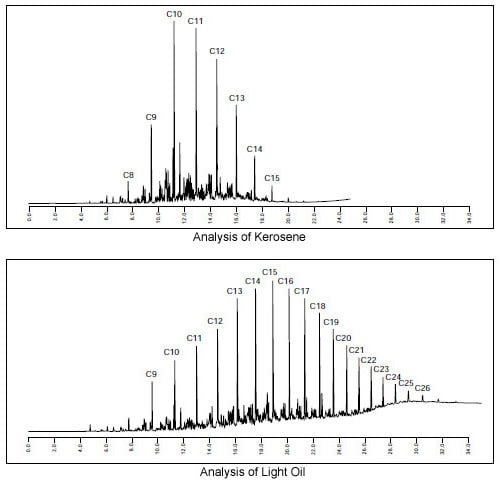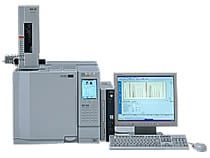Analysis of Kerosene and Light Oil (GC)
Kerosene is a petroleum fraction with a boiling point range of approximately 180°C to 300°C. Light oil is a petroleum fraction with a boiling point range lying halfway between that of kerosene and heavy oil. Like gasoline, both kerosene and light oil contain an extremely large number of compounds.
Examples of the analysis of kerosene and light oil using capillary columns are introduced here.
A 60m non-polar capillary column was used. Analysis was carried out by the split method.

Gas Chromatograph

A gas chromatograph (GC) measures the content of various components in a sample. The sample solution injected into the instrument enters a gas stream, which transports the sample into a separation tube known as the "column." Helium or nitrogen is used as this so-called carrier gas. The components are separated inside the column, and a detector measures the quantity of the components that exit the column. To measure a sample with an unknown concentration, a standard sample with a known concentration is injected into the instrument. The standard sample peak retention time (appearance time) and area are compared to the test sample to calculate the concentration.


